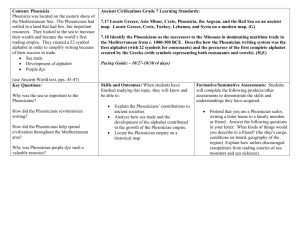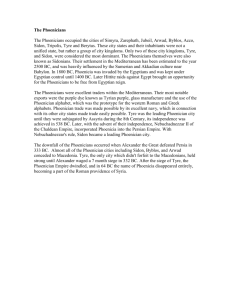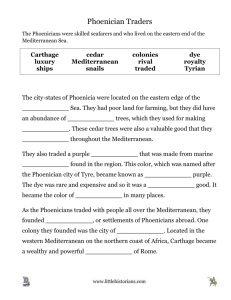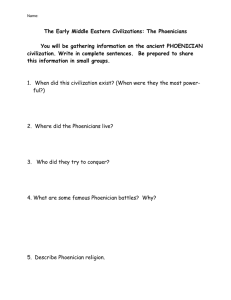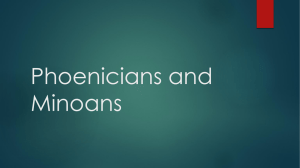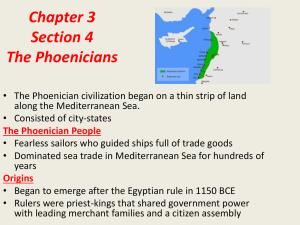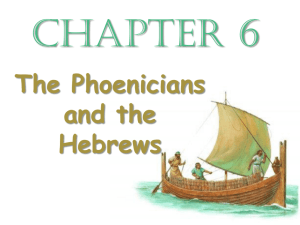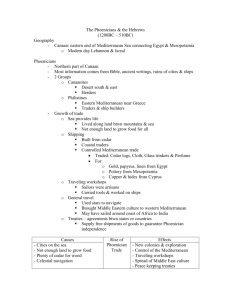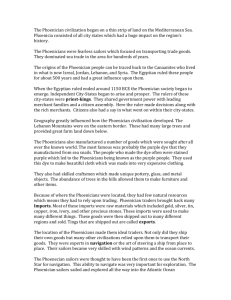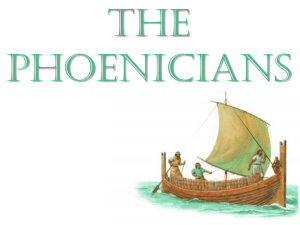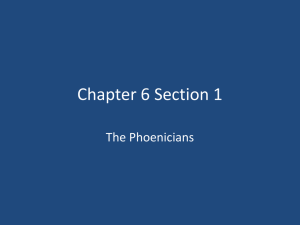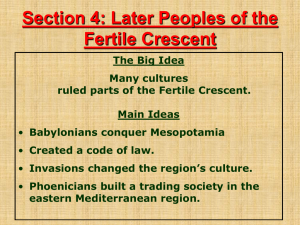Henry VIII and the Reformation in England
advertisement
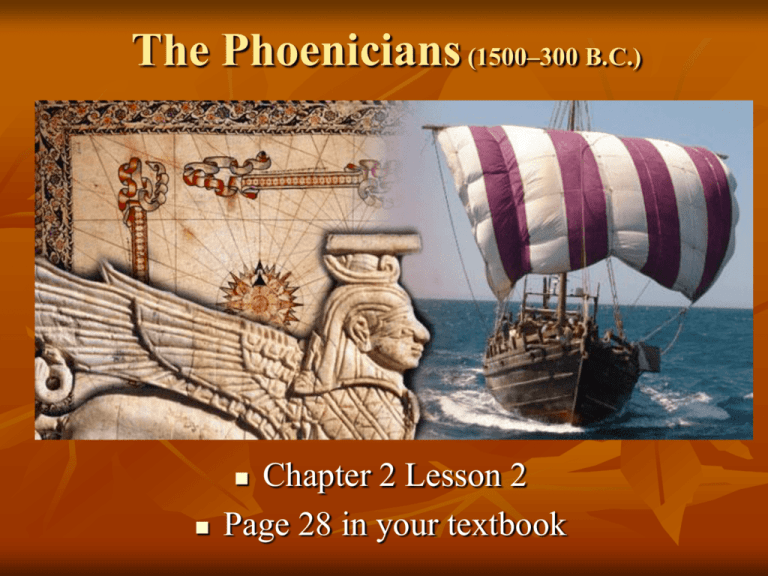
The Phoenicians (1500–300 B.C.) Chapter 2 Lesson 2 Page 28 in your textbook The Phoenicians According to ancient classical authors, the Phoenicians were a people who occupied the coast of the eastern Mediterranean. Their major cities were Tyre, Sidon, Byblos, and Arwad. Their cities were fiercely independent and competitive The Phoenicians were sea traders rather than a defined country. Geography Phoenicia was located between the eastern Mediterranean coast and the Lebanon Mountains Origin of the Phoenicians It is believed that economic opportunity and population pressures forced them out into the seas. The Phoenicians colonized many areas along the Mediterranean Sea. Colonization Colonization is invading and taking over of a foreign territory, which then becomes known as a colony. Phoenician Trade Routes Phoenician Colonies Sailed and colonized throughout the Mediterranean beginning circa 1000 B.C.E. Gades (Cadiz, Spain) Carthage (Tunis, Tunisia) Phoenicians By far they were superior to all peoples of that time in seamanship. Legend has it that an Egyptian pharaoh hired a band of Phoenicians to map and circumnavigate the coast of Africa. Sea Traders They are best remembered for their contributions in the establishment to trade with the many peoples living along the Mediterranean Sea. What did the Phoenicians Trade? The main natural resources of the Phoenician cities in the eastern Mediterranean were the prized cedars of Lebanon and murex shells used to make the purple dye. Trade They also traded Cloth Glass Pottery They traded for: Tin (Britannia) Hides, ivory, ostrich feathers, and slaves (Africa) Gold, precious stones, and spices (India) Alphabet Sumerian cuneiforms and Egyptian hieroglyphics were the only known forms of writing before the alphabet as we know it was developed. Both scripts, though separately created, used picture writing. Eventually, pictures or signs represented sounds. Finally, the pictures became so simplified that a whole word was written as a single sign. By about 1200 B.C., the Phoenicians had developed symbols which in time became a real alphabet. The Phoenician alphabet consisted of twenty-two symbols, all consonants. Alphabet Family Tree Ahiram Sarophagus about 1000 BC: Has the oldest evidence of the Phoenician alphabet discovered to date •The inscription reads: •Coffin which Ittobaal, son of Ahiram, king of Byblos, made for Ahiram, his father, when he placed him in the 'house of eternity'. •Now if a king among kings or a governor among governors or a commander of an army should come up against Byblos and uncovers this coffin, may the sceptre of his rule be torn away, may the throne of his kingdom be overturned, and may peace flee from Byblos! Government Organized into individual city-states, each Phoenician city was under its own form of government. Each had its own god and its own ruler, whose usually remained in power for life. Byblos was a strong religious city-state. Sidon and Tyre were cities of business, industry, and navigation. Review Questions Where was Phoenicia located? Name two Phoenician colonies. Where and what did the Phoenicians trade? What is considered to be the Phoenicians’ greatest contribution to the world?
